
What is the logic behind the foods deemed suitable for the British breakfast? Traditionally, we eat bacon but not ham, kidneys but not liver, haddock but not cod, kedgeree but not curry. I know there are individual and regional variations, but the taboos still seem eccentric.
Matthew, Aberystwyth
There is no logic, because it isn’t actually a very old tradition – look back at Victorian or Edwardian breakfast menus, and everything was fair game, from pasta to pickled herrings, mutton chops and onion soup. I suspect the modern “rules” about what is and isn’t breakfast food arise from the fact that these days a cooked breakfast is often consumed outside the home, in busy cafes with cramped kitchens, which restrict them to a certain, much smaller selection of dishes – favouring fairly cheap, easy to prepare foods with a long shelf life and wide appeal, such as bacon and eggs, rather than turbot au gratin or devilled pheasant.
I like spaghetti carbonara, but do not eat meat. I’m also not keen on “not bacon” because it’s processed nonsense. Any suggestions?
Michael, Manchester
I often make a kind of carbonara with strips of courgettes, rather than pork, and it’s delicious, but it doesn’t hit the umami spot you’re seeking. I suspect the best substitute might be mushrooms, cut into lardon shapes and fried with a little garlic and a pinch of smoked paprika, as the base of the sauce. Let me know how this goes – I’m quite intrigued now.
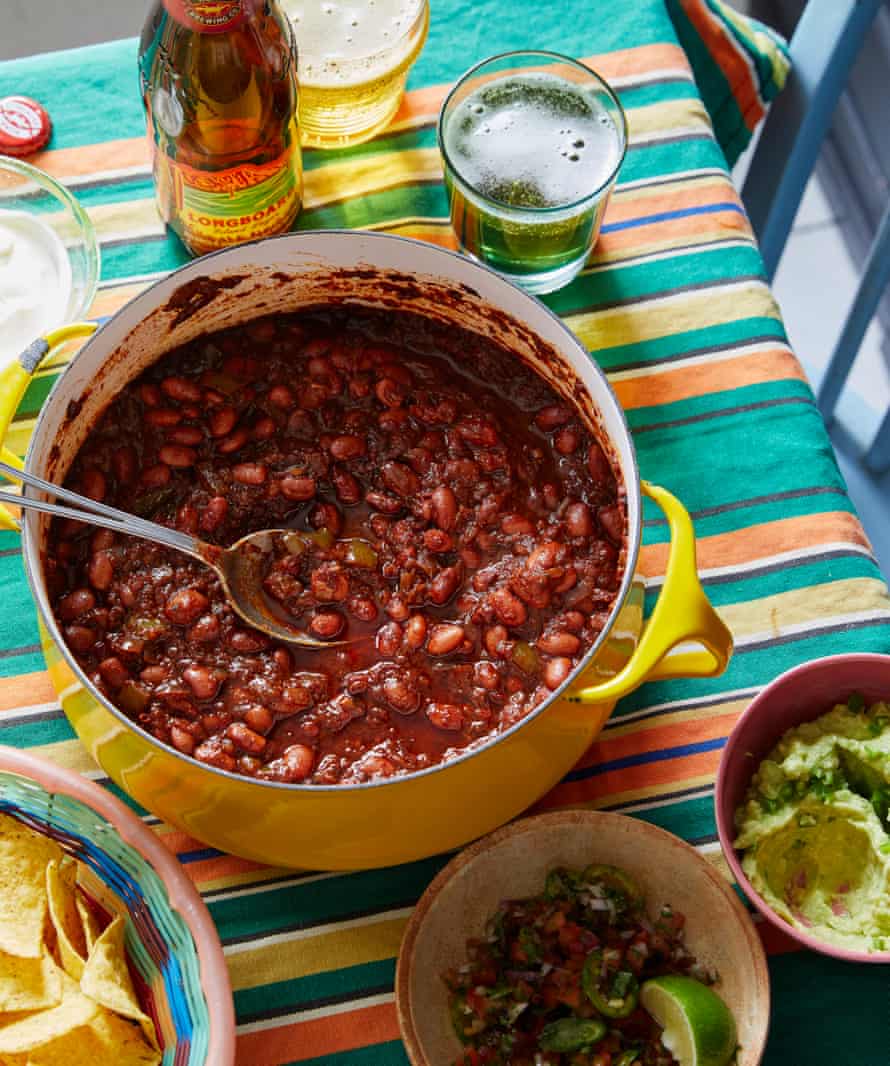
I think my cooking is boring. I’d like to make more meatless dishes – eg, lentils, beans, etc – but don’t know how to spice them up or make them kid-friendly.
Kate, North Carolina, US
Snap – I’m also trying to eat more beans and pulses at the moment. I think an easy way to look at it is to think of your favourite meat dishes, and use those same flavours with vegetables, beans or whatever – think of a bean chilli or courgette carbonara, for example. It sounds obvious, but familiar flavours and reference points are a good way to get kids, in particular, to try new things, especially if they can add cheese or ketchup on top. Don’t be afraid to be bold with your seasoning – vegetables and pulses can take it – and consider investing in a book or two for inspiration (I am now the proud owner of two books on bean cooking).
What are your favourite cheats and timesavers? Are there any (not so) guilty secret jars and pastes that you use to shortcut to the easy life?
Lawrence, Hong Kong
When I’m not testing recipes, I tend to keep cooking quite simple, so though there are some excellent time-saving pastes and sauces on the market, they don’t play a big part in my life. Things I do usually have on hand to make life easier: jars of fried shallots for topping noodles (you never regret having some good quality instant noodles knocking around for a quick dinner with a boiled egg and some chopped vegetables or pickles on top); Gentleman’s Relish for adding savoury oomph for absolutely everything (Marmite also works well if cooking for vegetarians, and, with butter, makes an excellent sauce for dried pasta); frozen whole-leaf spinach and sauerkraut or kimchi for when you have absolutely nothing fresh in the house; pecorino or parmesan; eggs; tinned fish (I’m a sucker for sardines on toast); and chilli oil, for sticking on all of the above.
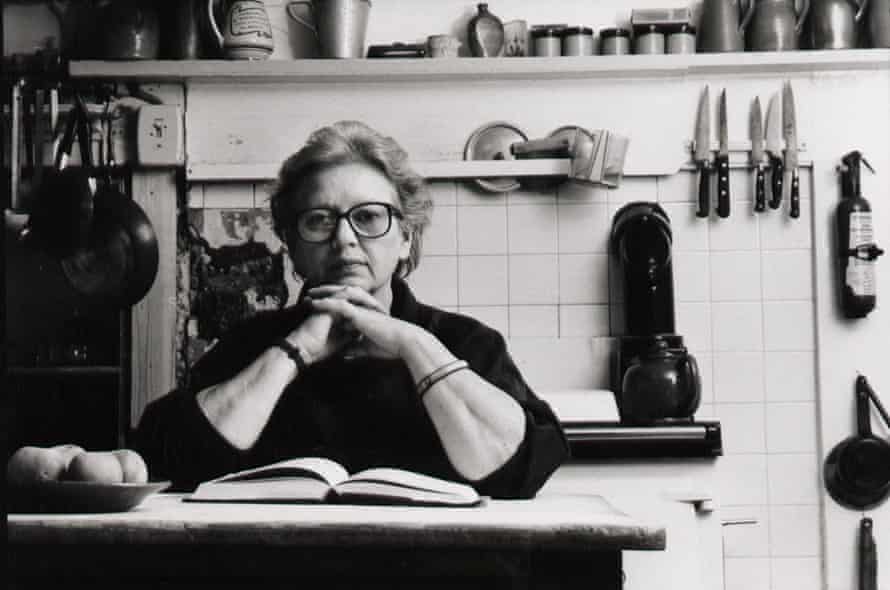
Who is your favourite cookery writer?
Craig, Yorkshire
That’s a really tough one, because I have many, but someone who I don’t think gets enough recognition today (perhaps because she’s often overshadowed by her more famous friend, Elizabeth David) is Jane Grigson, who was for many years the Observer’s cookery columnist, and an endlessly curious, quietly erudite writer whose recipes are both reliable and a jolly good read.
I’ve never had much doings with new-fangled things, but with my daughter now off to uni, and a limited budget, I’ve invested in a combi oven that apparently has a microwave, grill, oven and air fryer. Why do I need to fry air? Please help. I’m quite a traditional cook, so how do I adjust to this new single person with no starving teen to fill life?
Toni, Sheffield
Though the air fryer is, in my opinion, misleadingly named, given that it’s actually a tiny oven, rather than any sort of fryer, I think you’re going to find it extremely useful, because it allows you to cook small amounts of food quickly, relative to a standard oven, and using far less energy. Anything you’d like crisp, rather than microwaved, is a good candidate, from single cookies to roast vegetables to sausages. You can even make pretty decent chips in there, without the need for gallons of oil.
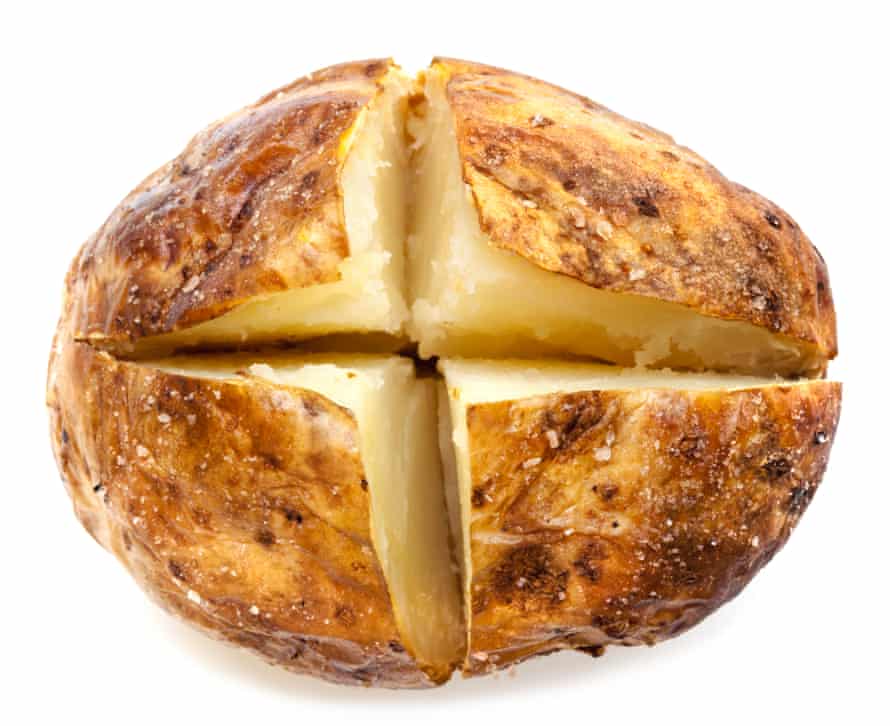
You did a How to cook the perfect jacket spud back in the days of cheaper energy, but what is the most cost-effective way to cook one now? It’s a favourite comfort meal for many, but with energy prices as they are, it will be coming off many people’s menus, which would be a shame, unless you can tell us how to cook them for less.
Ben, Ipswich
I asked Dr Christian Reynolds, senior lecturer at the Centre for Food Policy, City University, London, about this recently, and he recommends cooking them through in the microwave, then briefly crisping up the skins in a hot oven to finish – ideally, one you’re using for something else (because who would put the oven on for just one meal these days?). It’s not a perfect solution, but it’s better than going without jacket potatoes.
My partner cannot eat garlic or onion. What are the best alternatives?
Alan, London
I’m assuming this means other members of the same family, such as leeks, shallots, wild garlic and spring onions, are also out? If so, it’s a tricky one, because alliums have a distinctive, almost sulphurous flavour that’s difficult to recreate, though sauteed, finely chopped celery and green pepper or carrot will make a decent base for stews, soups and so on without them, while fennel has a similar texture, if a rather different taste. Jain and Brahmin Indians, who avoid onion and garlic for religious reasons, often add a pinch of asafoetida, or hing, to food instead – don’t be put off by the smell of the powder: once cooked, it blends seamlessly into the other ingredients to add a subtle, but definite savoury note. In fact, if you’re both keen on Indian food, their recipes might be worth checking out.
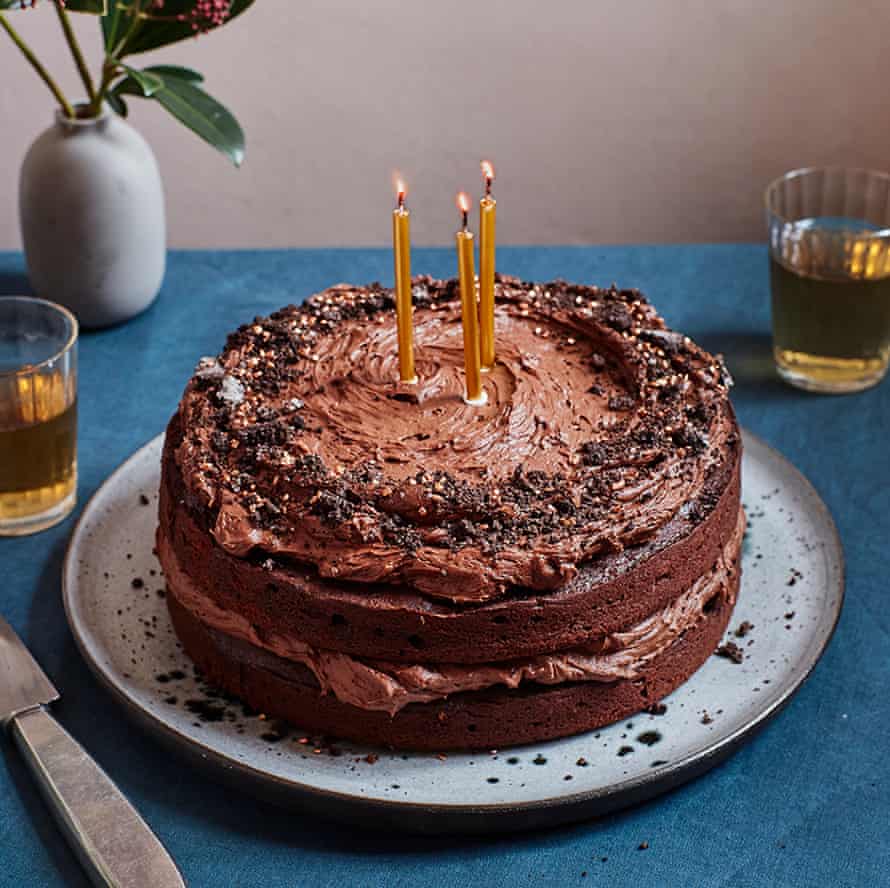
I’ve been making your amazing Perfect Chocolate Cake for more than a decade, with varying success. I would love to be more decisive when taking it out of the oven; I often leave it longer, thinking it’s too wobbly on top, but the end result then ends up a little dry. The other thing is, where do you stand when it comes to the cocoa percentage in the chocolate used? Is 55% OK?
Annie, Hertfordshire
Oh dear, I’m hoping that “varying success” refers only to how presentable the cake looks – in my experience, even an under- or overbaked chocolate cake is still delicious (if you drastically overbake it, it’s pretty nice broken into chunks and tossed through Greek yoghurt or crumbled on top of ice-cream, maybe soaked in a fruit syrup or a bit of booze to moisten it first). Ideally, however, it would be perfect, and that means it has a crust that’s completely set on top, but which, if you shake it, has just the slightest hint of a wobble in the centre: not a wave across the whole cake, but not a solid biscuit, either. Take a careful note of timings once you achieve perfection, because every oven differs. Regarding the chocolate, it’s largely a matter of taste – namely, how intense you want the cocoa flavour to be and how sweet your tooth is. I tend to use 70% cocoa chocolate to test, but if you prefer 55%, by all means use that. Part of the joy of cooking for me is making a recipe my own. Good luck.
Do you have any advice on how to make vegetable stock?
Bridget, Birmingham
The pungent, dried celery notes of some commercial vegetable stocks spoil them for me, which is why I tend to use chicken as a default (it has a more neutral, savoury character), but a better solution is to make your own. My golden rule is to think about the balance of flavours (almost anything but bitter brassicas and starchy spuds will work, but if you go too heavy on the root veg trimmings, say, you’ll end up with a very sweet stock); carrot tops, onion ends and celery are a good base. Mushrooms add umami, and other herbs and vegetables (garlic, ginger, chives, fennel tops, spices etc) can be added to taste. For a more intense flavour, roast or saute the veg in oil or butter first, to caramelise them, and consider adding dried mushrooms, seaweed or tomatoes, too. And don’t forget to season it.
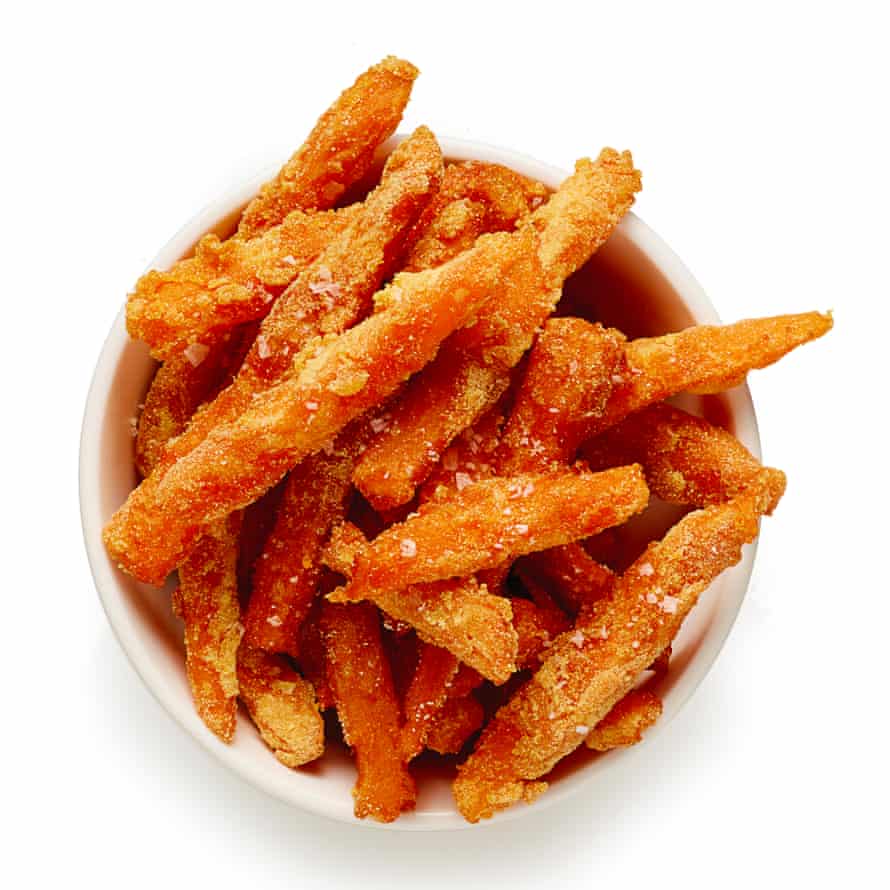
I love chips, but I’m trying to eat more veg and I can never get sweet potato wedges crisp enough or chip-like. They turn into a soggy clump if too thick and burnt matchsticks if too thin.
Diana, Manchester
A few things: rinse them first, to get as much starch off the surface as possible; par-boil, so the outsides don’t burn before the middles are cooked through; and coat them with something that will crisp up, such as seasoned cornflour. And I’m afraid that, as with ordinary chips, for best results you really need to fry them rather than bake them. I’d apologise, but the results are so delicious that I don’t think you’ll regret it.
I bake two gluten-free cakes that I love: Gino d’Acampo’s bella caprese and Nigella’s Venetian carrot cake (thanks to your pointer from the perfect carrot cake). I’m looking for others. What can you suggest?
Marcie, Huddersfield
The classic that springs to mind is Claudia Roden’s famous orange and almond cake, in her Book of Middle Eastern Food, a simple recipe that has spawned a thousand imitations (Roden herself got it from her brother’s first wife’s Syrian grandmother). She also has a lovely Turkish walnut cake in her recent book Med that would fit the bill, and, unsurprisingly, I love the pink grapefruit and pistachio cake from my own book, The A-Z of Eating. If you’re sick of nuts, polenta is another very good gluten-free option for dense, sticky cakes that take on other flavours, such as fruit or spice, beautifully – Yotam Ottolenghi has an orange one, Russell Norman a Venetian lemon version, Nigel Slater adds gooseberries and elderflower… you get the idea. Finally, I haven’t seen it myself, but Katarina Cermel’s book of gluten-free recipes, Baked to Perfection, won a Fortnum & Mason award this year, so it’s probably worth investigating for further inspiration.
What are the key things for failsafe, gorgeous gravy for roasts, with loads of flavour. Gravies that use the juices from the joint, thick enough to pour, but not too runny?
Susannah, Milton Keynes
I would say the most important factor in good gravy is open mindedness: even the best meat sometimes, inexplicably, yields very little to the roasting pan, which is when you need to deploy your culinary arsenal. If, once you’ve scraped the pan with boiling water, it still lacks that savoury oomph one so dearly hopes for in such circumstances, add some stock and let it bubble away to reduce – and don’t be too proud to stir in a little Marmite or soy sauce for an extra umami hit, if necessary. I also like to add a dash of madeira or sweetish sherry (or port with red meat) to give a more rounded flavour, though you can substitute a spoonful of something such as redcurrant jelly (a friend of mine makes the most incredible gravy, and, when questioned, usually confesses to having just added the contents of various almost-empty jars), while mustard or horseradish are useful for giving beef gravy a bit of a kick. Once you’re happy with the flavour, stir a little gravy into a spoonful of cornflour or ordinary flour to make a smooth paste, then stir back into the pan and cook until the gravy has thickened to your desired consistency. In short, though we’d all love to make great gravy from meat juices alone, sometimes they need a bit of help, and that’s fine.
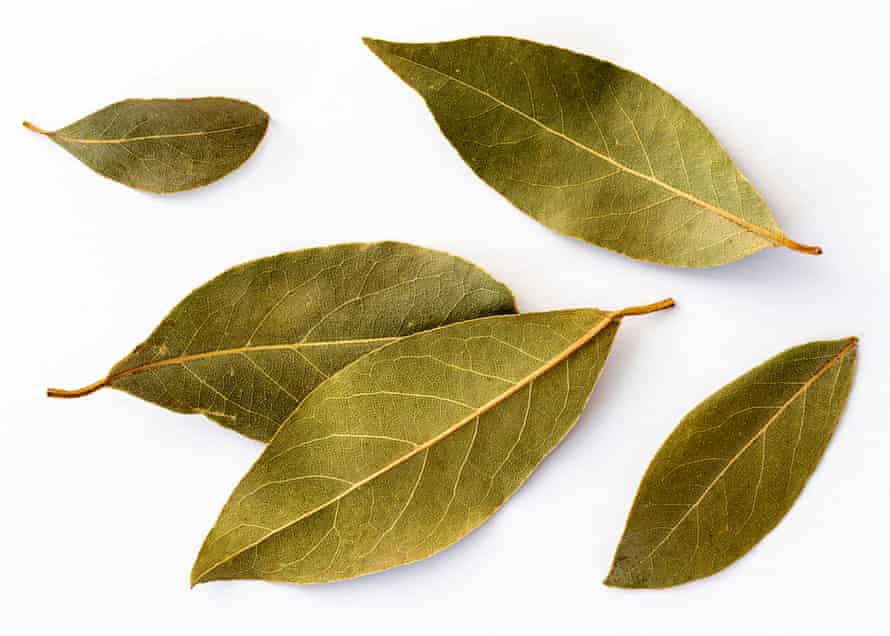
What’s the point of bay leaves? We have a massive bay tree, and I put them in stews and casseroles, but I’m never sure if they make the slightest difference. Any recipe that requires 100 of the things would be great, because we have a virtually unlimited supply.
Martin, Surrey
Bay is usually the supporting chorus, rather than the soloist, which means its faintly medicinal flavour blends into the background to give a subtle, savoury note that, while it won’t make or break most dishes, does add to the sum of their parts. (If you’re doubtful whether yours taste of anything at all, make a bay tea by boiling some up on their own: you’ll find that they indeed do, plus the tea will make your kitchen smell lovely.) The leaves dry or freeze well, and make a lovely flavouring for a custard or pannacotta; you can also turn them into a flavoured salt for use with meat or fish, or, perhaps more fun, make a liqueur with them: Sophie Grigson has a lovely looking recipe for an Italian liquore di alloro on her blog that uses 60 whole leaves!
How do you cook a meal for 30p? For context, I’m a chef who runs community cafes and cooking classes.
Anon, Edinburgh
With great difficulty, I’m sorry to say, if you add in the cost of fuel, the price of ingredients for those who can’t afford to shop in bulk, or batch cook and freeze. When I used to volunteer at a local community cooking project, the emphasis was on how to shop to get the best value – going to markets, rather than supermarkets, for example, or looking in the “world food” aisle for things such as rice and spices, but those just aren’t options for many, especially in rural areas. An easy answer is to make pricy ingredients such as meat the flavourings for cheaper fillers such as beans, carbs or vegetables, and not to forget about things like eggs and tinned fish as a protein source. To be honest, though, I think most people know all that already, and they’re still struggling.
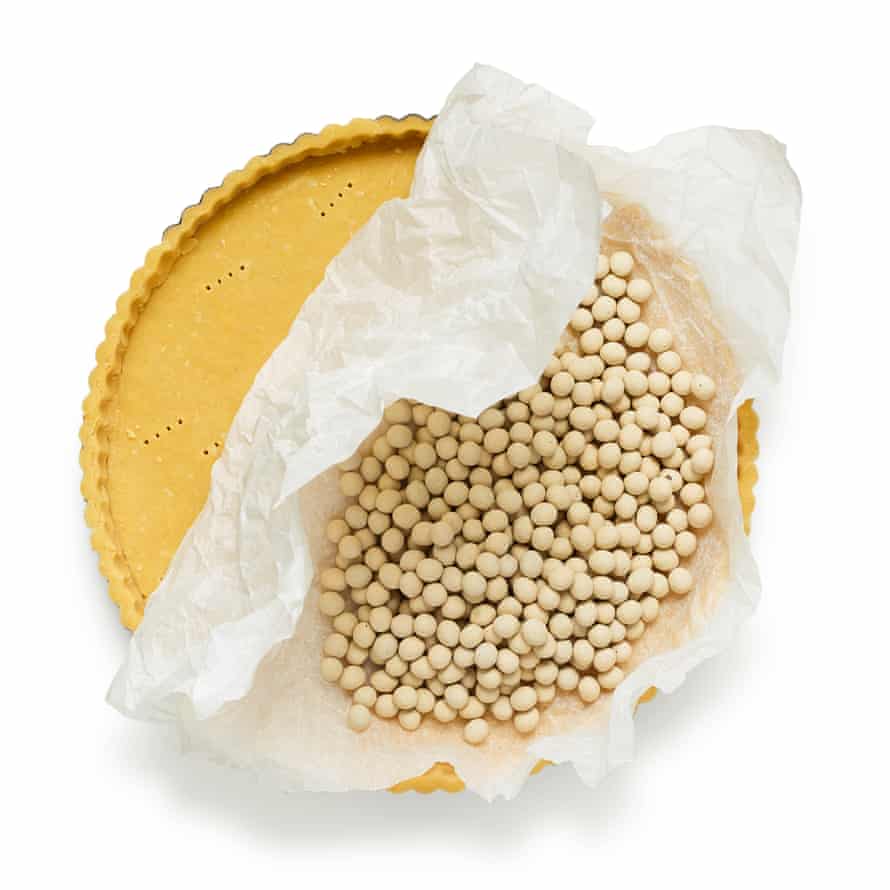
How can I bake the best shortcrust tart or quiche cases? They need to hold their shape, be robust enough to get out of the tin intact, melt in the mouth … How long do I blind bake for? What is the best ratio of different fats? Should I brush with egg and bake again before adding the filling? Should I trim it warm or cold? What should I use to trim it? Should I leave it to cool completely before taking it out of the tin? There are so many pitfalls.
Rachel, Otley, West Yorkshire
Pastry is a tricky mistress, and even the most experienced cook can end up with a wonky side or cracked base. As someone who lacks the patience and delicacy of the true patissier, I have a few tips. Hard fats, such as vegetable shortening or lard, give a more delicate texture, but butter gives the best flavour, so that’s what I tend to use. The standard ratio is half as much fat to flour, but you can increase this for a richer, but slightly more temperamental result – however much you use, be careful not to overwork the dough as you rub it in, or the pastry will be tough. Most importantly, however, keep everything as cold as possible for as long as possible; many recipes not only recommend chilling the fat, but the flour, rolling pin and even the marble slab you’re working on, if you happen to be lucky enough to own such a thing. Get the dough out of the fridge five to 10 minutes before rolling it out thin – 5mm is safe, 3mm if you’re feeling professional. Make sure you get the sides of the pastry at a right angle with the sides of the tin when you line it, then chill again before baking. Trim the overhanging edges, line with baking paper and dry beans or rice, and bake until the top is golden. Remove the lining and beans, and return to the oven until the base is lightly golden. (If you’re using a really wet filling, or end up with cracks, brush the base with beaten egg at this stage, but it’s not generally necessary.) And, yes, leave it to cool before removing from the tin.
What on earth do you do with all the food you cook for the How to cook the perfect… column?
Jezz, Tunbridge Wells
I eat it. Honestly, it depends – I try to put it in front of as many people as possible to canvass opinion, which means sometimes I end up having people over for dinner and making them eat five different versions of the same dish in return for a pithy quote on each, and sometimes I lug them over to the Guardian office for the same purpose. Baked goods are usually well received at the local food bank, some stuff gets frozen and, luckily, I’m not too proud to object to eating the same thing four days in a row. Nor is the dog.
My German partner and I run a small, English-themed B&B in Germany. Our full English breakfast is much admired, but we’re often asked for baked beans, because they are seen here as typically English. We try to explain that baked beans are an American innovation and have no place in a truly English breakfast, though I wonder if we’re being pedantic – after all, one might use the same argument about tomatoes. How much time has to pass for an ingredient to become an element of a traditional dish, and should we even care?
Paul, Germany
First, let me say I love the idea of an English-themed B&B – can I come and stay? While I’m not a fan of baked beans on a fry-up – like Alan Partridge, I have a horror of beans touching egg – I must concede that they’ve become so embedded in British culture that Heinz doesn’t even sell baked beans in the American market any more, and they’ve probably been included in cheaper versions of the full English for almost as long as that term has been in existence. (It first pops up in 1933, and until the postwar period seems to have referred simply to eggs, bacon, toast and marmalade, rather than the whole shooting match we see today.) You’re right, however, that a grilled tomato is the thinking person’s choice. Beans belong on toast.
-
Felicity Cloake’s new book, Red Sauce Brown Sauce: A British Breakfast Odyssey, is published by HarperCollins at £16.99. To order a copy for £14.78, go to guardianbookshop.com



